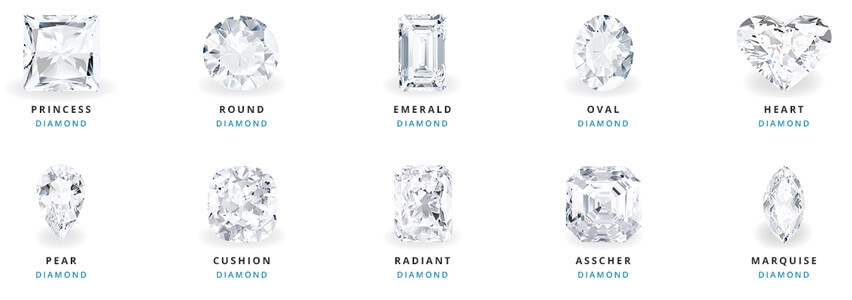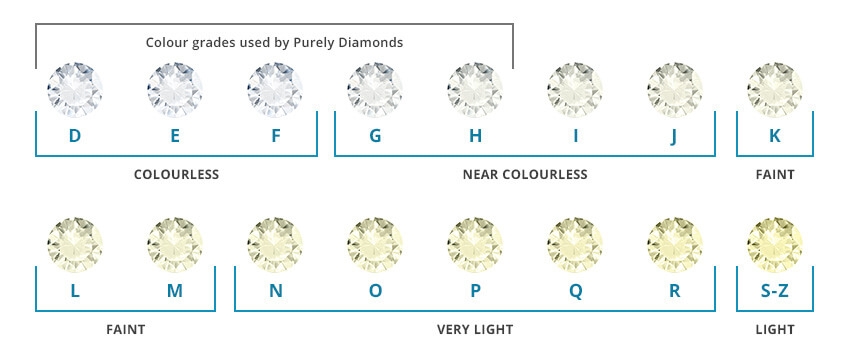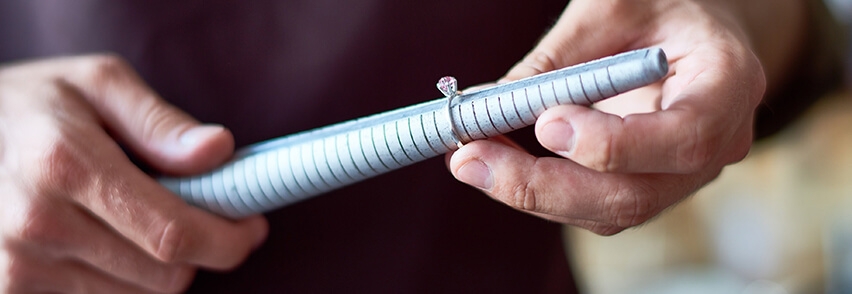Engagement Ring Buying Guide
Choosing a diamond engagement ring is a life changing moment and can be a big commitment both emotionally and financially.
With this in mind, before popping that all-important question, you need to know exactly what you’re looking for.
At Purely Diamonds, we know that the process of buying engagement rings can be a little overwhelming so we’ve put together a simple step by step guide to help you find the perfect ring.
1. Diamond Shape
There are 10 main diamond shapes to choose from. Normally, this is the easiest hint that is dropped by your partner – which can help you start your search a lot more quickly. If you don’t know what shape they’d like, then don’t worry, we can help you…

Round cut diamond engagement ring is the most classic style because of its ideal shape and the way that it sparkles; however, there are lots of advantages of the other shapes.
Shapes like Ovals, Radiants, Pears and Marquises all offer great size per carat weight and can elongate the fingers.
If you think your partner would prefer the beauty of a step shape diamond like an Emerald cut or an Asscher then these stones offer stunning structure over sparkle.
For those that like sparkle, but like to be a little bit different, then Princess and Cushion cuts offer more modern styles for your ring choice.
2. Diamond Colour
When choosing a diamond engagement ring, you need consider what colour you would like. We’re not talking about that blue diamond from Titanic, but more about how colourless your white diamond is. All white diamonds have a colour grade from D to Z, similar to the Mohs scale.
D is the highest colour grade and subsequently colourless and Z is the most tinted and usually yellow or brown in appearance. To make it easier for you – we only believe that diamonds used in jewellery should be D to H in order to guarantee there are no visible tints to the stone.

All the grades we offer are bright and beautiful, so it all comes down to your budget and personal preferences which you wish to go for.
If you think your partner would rather have some real colour, then why not take a look at our gemstone rings.
3. Diamond Carat Weight
The carat weight of a diamond is the thing that has the biggest impact on the price. The bigger the carat, the bigger the diamond… The bigger the price! So usually the carat weight you go for is dictated by the other aspects of your ring and then how big your budget allows.

The actual weight of a carat is just 0.2 grams so the measurements of a diamond are always something to consider. Whilst the price between a 0.80ct and a 0.90ct may jump up by a substantial amount, they’re only marginally different in diameter measurements – all our rings will tell you their measurements if you’re unsure.
4. Diamond Clarity
The clarity of a diamond refers to how pure the internal structure of a diamond is. Most diamonds have imperfections or inclusions; the important thing is that you cannot see them to the naked eye.

Diamonds are graded from Flawless to I3 in terms of clarity. We don’t believe that “I” clarity grades are best suited for jewellery which is why we only go as low as SI2. To guarantee the stone is “eye clean” – and therefore no visible imperfections you should choose between VVS1 and SI1 uncless you are choosing your own diamond from our diamond feed as SI1 is not guaranteed to be eye clean. Please contact us in advance to confirm your chosen stone is suitable
5. Ring Metal
When deciding which engagement ring is right for you, there are several metals to choose from. We have White gold engagement rings, Yellow gold engagement rings, and a Rose gold collection as well as Platinum engagement rings available for our clients. Whilst white metals such as platinum and white gold are most popular, if your partner’s jewellery collection is full of rose or yellow metals with rings like full yellow gold eternity rings – then yellow gold full diamond eternity rings could be a good suggestion of what to go for.

When brand new, both white gold and platinum have the same appearance but they age differently over time – so this choice is your personal preference.
Remember, if your partner doesn’t wear any jewellery, it’s usually a safe bet to go with a white metal… And worst case scenario – our money back guarantee means you can exchange it if it’s not quite right!
6. Choosing the Ring Size
The most effective way to find out your partner’s ring size without them knowing is to maybe raid their jewellery box and find a ring they wear. You can use our online tool to check the ring size to help with your order or visit a local jeweller who can tell you the size.
Bear in mind if the ring is worn on the middle finger, we would recommend an engagement ring that is approximately 2 sizes smaller.


